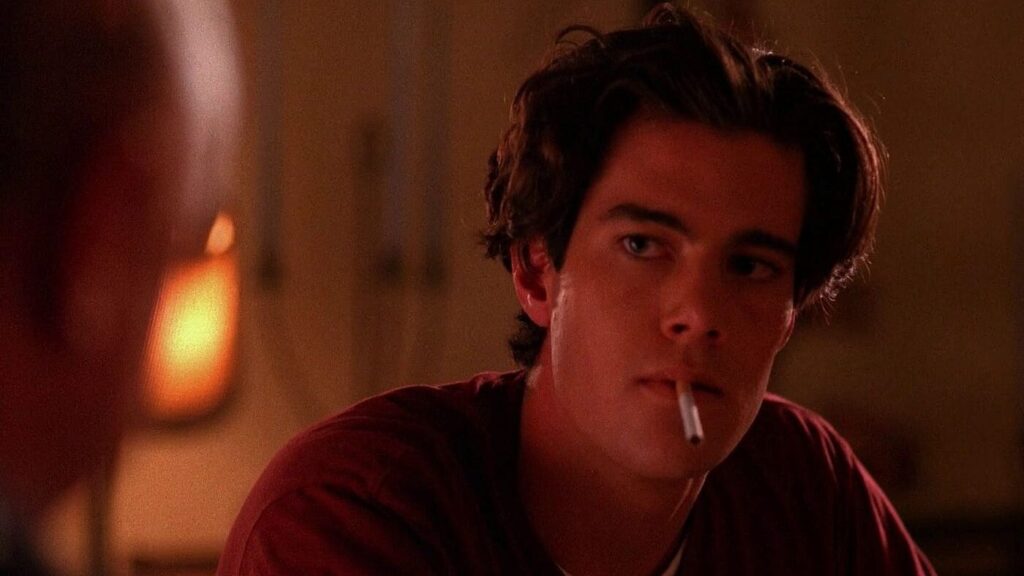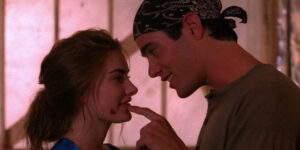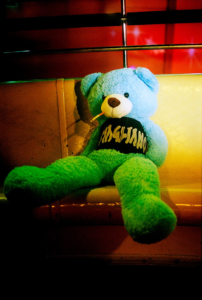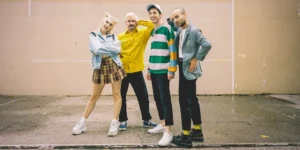In a world of log ladies, backwards-talking dream spirits, and owls that may or may not be what they seem, Bobby Briggs was, paradoxically, one of the most real figures in David Lynch and Mark Frost’s surrealist television masterpiece Twin Peaks. A slick-haired, cigarette-smoking high school quarterback with a dangerous glint in his eye and a heart secretly aching for redemption, Bobby was the archetypal rebel—yet he was more than a trope.
Portrayed with haunted charisma by Dana Ashbrook, Bobby Briggs stood at the combustible crossroads of 1950s Americana nostalgia and 1990s postmodern disaffection. While James was quiet, Bobby roared. While others whispered secrets, Bobby spat venom and danced between guilt and swagger.
More than three decades since the series first aired, and five since its timeline was born, Bobby Briggs remains a cultural specter—flickering between the image of a smirking teen and the stoic, uniformed deputy we meet years later in The Return (2017). This is the legacy of Cherry Pie and Cigarettes. And this is Bobby Briggs, forever.
The Construction of a Teen Rebel: Between Brando and Badalamenti
Bobby Briggs was born from a cultural echo—the American screen rebel. But unlike James Dean’s Jim Stark in Rebel Without a Cause or Marlon Brando’s Johnny in The Wild One, Bobby’s rebellion didn’t exist in isolation. It was filtered through the kaleidoscope of Twin Peaks, a show where archetypes morph into the uncanny, and normality is always a costume.
In his earliest scenes, Bobby is pure posturing: sunglasses indoors, jeering during Laura’s funeral, accusing everyone else of being phonies. But even in the pilot, Ashbrook imbues him with nervous volatility. You can see it in the way he clenches his jaw, his eyes darting not out of malice, but fear.
According to Ashbrook, in a rare interview, “I always knew Bobby was performing. The attitude, the bravado—it was defense. He was terrified.” And that terror slowly unravels in the series, as Bobby confronts the fallout of Laura Palmer’s death, his strained relationship with his war-hero father, and the echoing absence of meaning in the chaos of Twin Peaks.
Angelo Badalamenti’s iconic score swells behind Bobby’s scenes not with menace, but melancholy. Lynch allows Ashbrook moments of astonishing vulnerability—whether it’s watching his father speak to him in dreams or realizing that, despite all his schemes, he cannot outrun grief.
Cherry Pie, Cigarettes, and the Duality of the American Dream
Bobby Briggs is a symbol. Not just of rebellion, but of the dissonance inside the American Dream. He is Twin Peaks’ James Dean with a rifle, the quarterback who sells drugs behind the school bleachers, the kid who loved Laura too much and hated himself for it.
His family story sharpens that contrast. Major Garland Briggs—played with quiet moral gravity by Don S. Davis—serves as a mirror Bobby spends years trying to smash. The Major speaks in spiritual riddles and dreams of fire and angels; Bobby speaks in sarcasm, loud music, and aimless rage. Yet in one of Twin Peaks’ most tender reversals, Bobby tells Shelley, “My father said I’d be something one day… and maybe I will be.”
That line, nestled inside the noir-drenched mystery of the town, is one of the series’ most hopeful moments. It’s not just Bobby beginning to believe in himself—it’s Ashbrook lifting the character above stereotype, breathing into him something tragically sincere.
Dana Ashbrook: Performance Inside the Madness
Dana Ashbrook’s portrayal of Bobby is among the most underrated performances in television history. In a show celebrated for the bizarre and the baroque, Ashbrook had the uniquely difficult task of playing a recognizable teen without becoming dull. And he succeeded—through his physicality, timing, and eyes that always seemed to be holding back tears behind their glare.
Bobby is as performative as any other Twin Peaks resident—but while others wear their masks tightly, Bobby’s always seems on the verge of falling off. There’s panic in him, the panic of youth forced to face adult decisions too quickly.
Ashbrook reportedly worked closely with Lynch during filming, receiving minimal direction but maximum psychological support. “He let me find Bobby,” Ashbrook once said. “He trusted I knew who he was.” That trust shows. Bobby never feels written—he feels remembered.
Bobby in The Return: Redemption in Uniform
When Bobby returns in Twin Peaks: The Return, it is not as the rebel but as the law. Dressed in sheriff’s department brown, now calm and gentle-eyed, Bobby stands beside the new generation of chaos with a patience he never had in youth.
It’s the ultimate arc reversal: the teen rebel becomes the town’s emotional anchor. He comforts Shelley (now aged and tragically reliving her past through her daughter), speaks of his father with reverence, and even confronts violent situations with clarity and moral steadiness.
And yet, the spirit of the old Bobby never disappears. It simmers beneath his now-regulated demeanor. In a poignant scene, he finds a message left by his father long ago, a cryptic note predicting Bobby’s destiny. He tears up. So do we.
What makes this moment land is its simplicity. Ashbrook plays it not as triumph, but as gratitude—gratitude for having survived his own rage, his town’s darkness, and the unrelenting memory of Laura Palmer.
Cherry Pie as Symbol: Americana in a Cup of Damn Fine Coffee
The cherry pie and cigarette motif is not just visual flair—it is semiotic shorthand. Pie in Twin Peaks represents comfort, domesticity, memory. Cigarettes represent damage, addiction, the glamour of self-destruction. Bobby lives between these two extremes. He wants the pie. He reaches for the cigarette.
David Lynch once said, “The look of Twin Peaks is the look of memory.” Bobby’s entire persona is a battleground of memory—of Laura, of expectations, of who he thought he was. In The Return, we see him let go. Just enough.
Literary Context: The Fallen Youth in Fiction
Bobby Briggs echoes a long tradition of American literature’s broken young men. From Holden Caulfield’s disaffection in The Catcher in the Rye to Nick Carraway’s helpless witnessing in The Great Gatsby, Bobby fits among those who rebel not because they want to burn it all down, but because they know it’s already crumbling.
In Joan Didion’s Play It As It Lays, we read of characters who drift through the California sun, aimless and bruised. Bobby is their northern cousin—shuffling through Douglas fir shadows instead of desert light, but just as lost.
What Ashbrook does so well is give this literary lineage a face. A jawline. A snarl. And, eventually, a smile.
Fan Devotion and Legacy: Bobby Lives On
Bobby Briggs remains one of the most enduring characters in the Twin Peaks mythos. Fans make zines about him, draw him in graphic novels, and remix his dialogue in lo-fi YouTube videos.
His cult status owes much to Ashbrook’s charm—but also to the deep truth of the character. We’ve all been Bobby. Angry without knowing why. Guilty without being caught. Craving change but unsure how to begin.
And then, maybe, like Bobby in uniform, we grow up. Still carrying the past—but with just enough clarity to help someone else carry theirs.
Forever Bobby, Forever Burning
Bobby Briggs is more than a bad boy. He is a meditation on youth, loss, and the hope of becoming more than what the world expects of you. Dana Ashbrook’s performance, once raw and frenetic, later measured and wise, shows the trajectory of a boy forged in fire finding, at last, a place in the quiet woods of adulthood.
Cherry pie and cigarettes. Sin and sweetness. The Americana dream and its burning edges.
This is Bobby Briggs.
Forever.
No comments yet.









